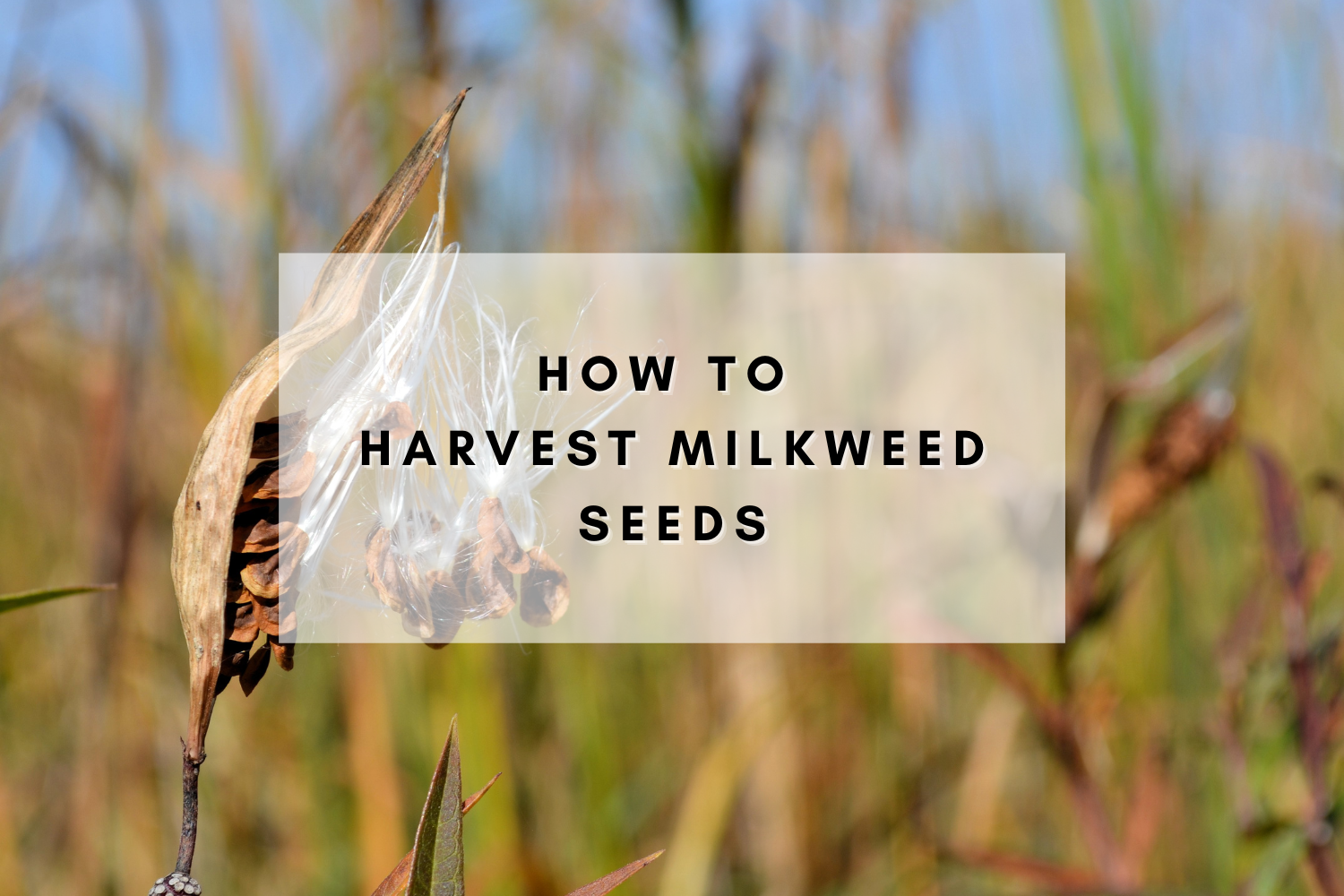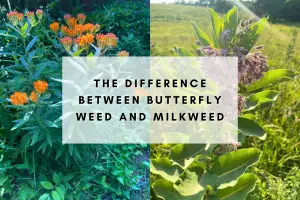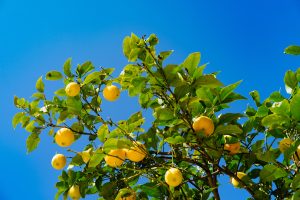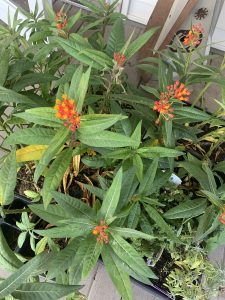Milkweed plants are not just another pretty flower in your garden; they play a crucial role in supporting the declining monarch butterfly population.
Monarch butterflies rely on milkweed as a host plant for their larvae. To help these support monarch populations, it’s important to harvest milkweed seeds so you can grow more milkweed in your garden – and share with your friends.
It’s easy to learn how to harvest milkweed seeds so you can contribute to the conservation of these butterflies and other pollinators.
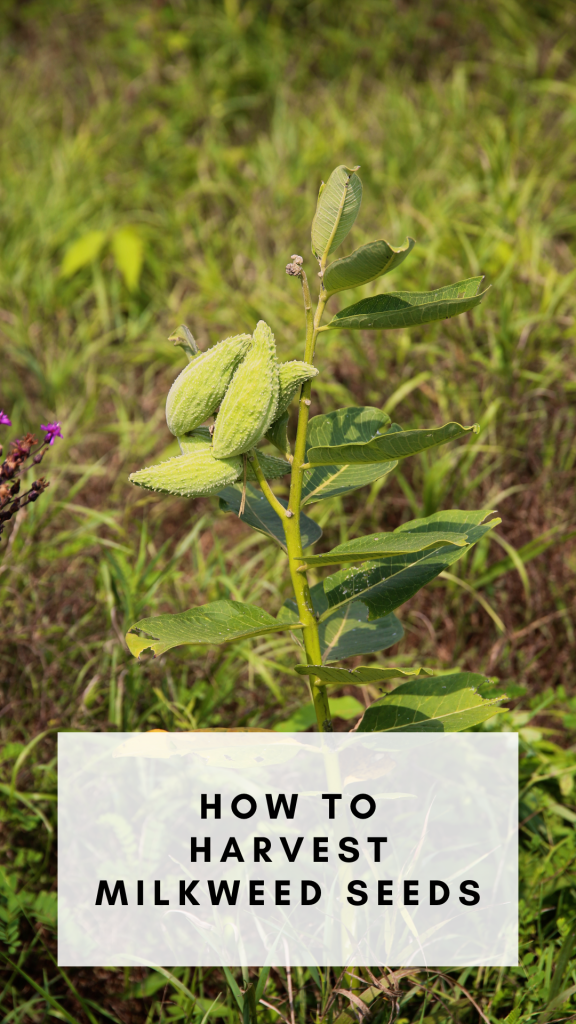
Why Milkweed is Important:
Milkweed (Asclepias) is the primary food source for monarch butterfly caterpillars. Without milkweed, monarch caterpillars won’t survive to become butterflies. They can eat all types of milkweed, but won’t ingest any other type of plant. By growing milkweed in your garden, you are directly contributing to monarch conservation efforts.
When to Harvest Milkweed Seeds:
The timing of milkweed seed harvest is critical. The best time to harvest milkweed seeds is late summer to early fall. Milkweed plants will produce seed pods during this period. Harvest seeds when the pods are mature but have not yet burst open.

How to Harvest Milkweed Seeds:
Identify Mature Seed Pods:
Look for milkweed seed pods that have turned brown and appear dry. If the pods aren’t fully formed or are green, they aren’t ready to be harvested yet. Keep checking your milkweed plants until the pods appear ready.
Prepare Your Tools:
You don’t need much to harvest milkweed pods. Just a pair of gardening gloves and small, sharp scissors or pruning shears.
Harvest the Pods:
Gently hold the seed pod with one hand and cut the stem just below the pod with the other. Place the harvested pods in a paper bag as you continue to gather pods.
Prepare for Seed Extraction:
Once you’ve gathered enough seed pods, transfer them to a well-ventilated area or a dry room. Spread the pods out on a clean surface, like a table or sheet.

Extract the Seeds:
Use your fingers or a small tool to open the pods. Gently separate the seeds from the fluff (comas) by tapping the pods over a container or piece of paper.
Clean and Store the Seeds:
Remove any remaining fluff from the seeds. This may be the most tedious part of the process. Store the seeds in a labeled, airtight container in a cool, dry place. Make sure the container is secure to prevent moisture or pests from reaching the seeds.

Important Tips:
- Leave Some Pods Behind: Always leave some milkweed pods on the plant to provide food for caterpillars and ensure future generations of monarchs.
- Local Species: Whenever possible, choose milkweed species native to your region. Native milkweed is better adapted to local conditions and supports a wider variety of pollinators.
- Responsible Harvesting: Harvest only a portion of the seeds to avoid depleting the plant population.
- Spread the Love: Share extra seeds with friends, family, or local conservation organizations to help expand milkweed habitat.
By responsibly harvesting milkweed seeds and growing these essential plants in your garden, you contribute to the survival of monarch butterflies. Creating a haven for monarchs in your own backyard is a rewarding and impactful way to support these pollinator populations.
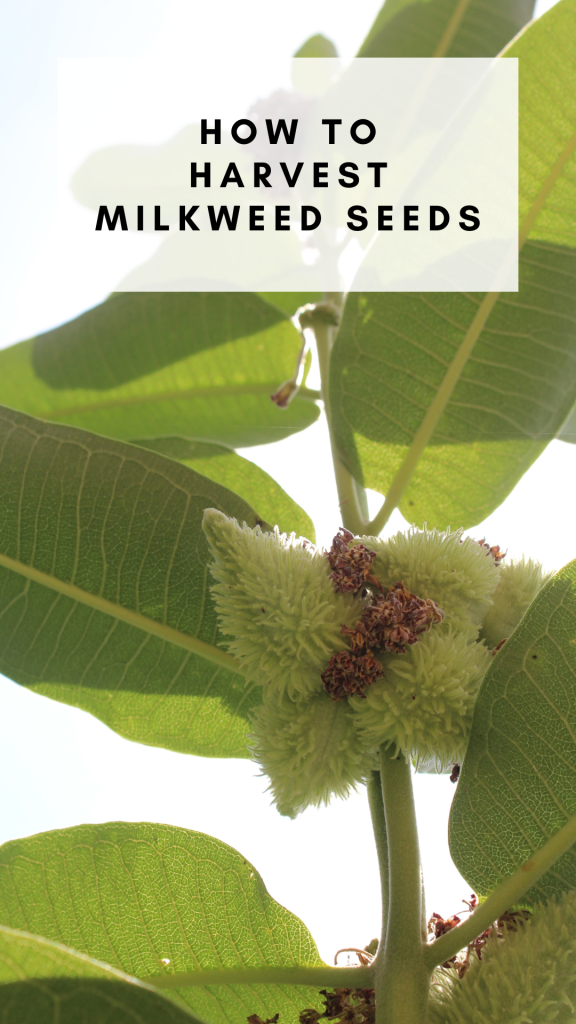
When to Plant Milkweed Seeds
Planting milkweed seeds at the right time is essential to help these vital plants thrive and support monarch butterflies and other pollinators. The best time to plant milkweed seeds depends on your location and the specific type of milkweed you’re growing, but here are some general guidelines:
Fall Planting:
In many regions, especially those with cold winters, fall is the ideal time to plant milkweed seeds directly in the ground. This allows the seeds to experience natural cold stratification over the winter, which can help improve germination rates.
Late fall, after the first frost but before the ground freezes, is a good time for fall planting.
Winter Planting: Winter sowing is an option for planting your milkweed seeds during the colder months. Create a mini-greenhouse with a water or milk jug to plant your seeds in, then set outside in a sunny location.
In areas with a true winter, this method is a good option for planting January-March.
Spring Planting:
If you missed the fall planting window or live in a region with milder winters, you can plant milkweed seeds in the early spring once the ground thaws and temperatures start to rise.
Year-Round Planting (In Mild Climates):
In some regions with mild climates, you can plant milkweed seeds year-round. However, it’s still a good practice to avoid planting during the hottest and driest parts of summer.
Local Recommendations:
For more precise timing, consider contacting your local cooperative extension office or a native plant nursery. They can provide guidance on the best planting times for milkweed species native to your region.

Tips for Planting Milkweed Seeds:
Scarification: Some milkweed seeds have tough seed coats that benefit from scarification (scratching the seed coat to allow water absorption). You can scarify seeds by lightly sanding them with fine-grit sandpaper or nicking the seed coat with a knife.
Stratification: If you’re planting in the fall, the cold winter temperatures can naturally stratify the seeds. For spring planting, consider cold stratifying the seeds by placing them in a plastic bag with moist soil or a damp paper towel and refrigerating them for several weeks.
You will also need to manually stratify the seeds if you are planning to start them inside over the winter. Place them in your refrigerator for 4-6 weeks to mimic natural stratification.
Soil Preparation: Choose a sunny location with well-draining soil. Milkweed seeds need good soil-to-seed contact for successful germination. Clear away debris and competing vegetation.

How to Sow Milkweed Seeds:
- Scatter the seeds on the soil surface or plant them about 1/4 inch deep.
- Water the area thoroughly but gently to avoid washing the seeds away.
- Mulch: Apply a thin layer of mulch to help retain moisture and protect the seeds from drying out or being eaten by birds.
- Regular Watering: Keep the soil consistently moist, especially during the germination period. Once established, many milkweed species are drought-tolerant.
- Spacing: Follow the recommended spacing for the specific milkweed species you are planting. Some species can be quite spreading, so give them room to grow.
Remember that patience is key when growing milkweed from seeds. It may take some time for the seeds to germinate and for the plants to establish themselves.
But once they do, you’ll be providing vital habitat and nectar sources for monarch butterflies and other pollinators.

